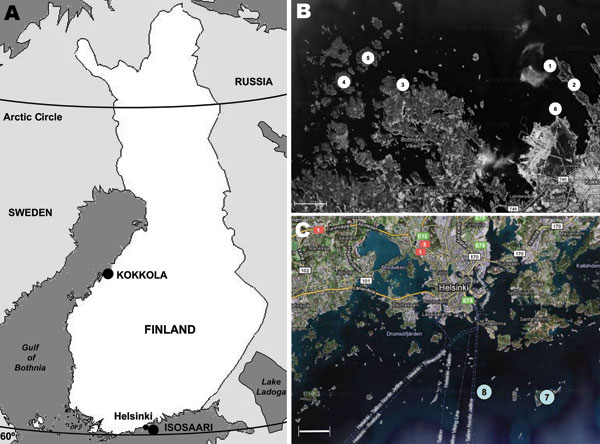Volume 17, Number 1—January 2011
Dispatch
Tick-borne Encephalitis Virus in Wild Rodents in Winter, Finland, 2008–2009
Figure 1

Figure 1. Sites at which rodents were trapped during winters of 2008 and 2009, Finland. A) Locations of trapping sites within Finland. B) Kokkola archipelago, where Siberian subtype of tick-borne encephalitis virus is endemic: 1,Trullevi, Kupu Island; 2,Trullevi; 3, Enträskholmen Island; 4, Börskär Island; 5, Norra Hamnskäret Island; 6, Harrbådan. C) Helsinki archipelago, Isosaari, where European subtype of tick-borne encephalitis virus is endemic: 7, Isosaari Island; 8, Harmaja Island. Scale bars indicate 2 km.
Page created: June 30, 2011
Page updated: June 30, 2011
Page reviewed: June 30, 2011
The conclusions, findings, and opinions expressed by authors contributing to this journal do not necessarily reflect the official position of the U.S. Department of Health and Human Services, the Public Health Service, the Centers for Disease Control and Prevention, or the authors' affiliated institutions. Use of trade names is for identification only and does not imply endorsement by any of the groups named above.